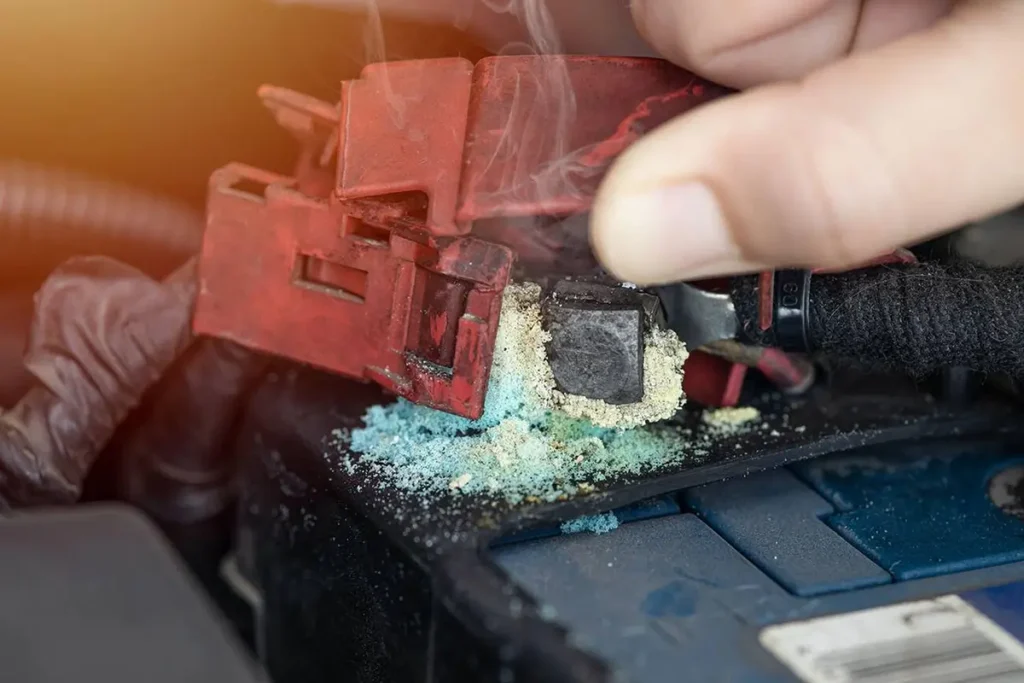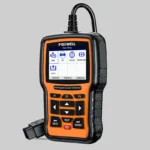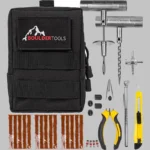In this post, we will be tackling a common but often overlooked issue that can impact your vehicle’s performance—battery corrosion. Ignoring those crusty, white deposits on your battery terminals is like ignoring a toothache; it only gets worse. So, let’s roll up our sleeves and get to the root of the problem to keep your car running smoothly.
What Causes Battery Corrosion?

Why do those pesky white powdery deposits appear on your battery terminals? It all boils down to chemistry. Battery terminals connect to metal clamps, creating a perfect environment for a chemical reaction when combined with the hydrogen gas released by the battery acid. This reaction forms a corrosive substance which, if not cleaned, hampers the battery’s ability to start the engine.
Tools and Materials Needed
Before we dive into the cleaning process, you’ll need to gather a few key items to ensure you can handle the job safely and effectively:
- Safety Gear: Rubber gloves and safety goggles are a must to protect your skin and eyes from the corrosive materials.
- Cleaning Agents: Baking soda is your best friend here, acting as a neutralizer for the acid.
- Brushes and Cloths: A wire brush for scrubbing the terminals and a cloth for wiping away debris.
- Petroleum Jelly: This will be used later to protect the cleaned terminals from future corrosion.
- Optional: For those who prefer ready-made solutions, a commercial battery cleaner and a corrosion-prevention spray can be handy alternatives.
Step-by-Step Guide to Cleaning Battery Corrosion
Always start with safety. Ensure the vehicle is off and the keys are removed. Slip on your rubber gloves and safety goggles to shield yourself from any harmful chemicals. It’s better to be safe than sorry, as the old saying goes.
Initial Cleaning
First, disconnect the battery terminals, starting with the negative cable to prevent any electrical shorts. Use a wire brush to gently scrub off the loose corrosion from the terminals and cable clamps. Wipe the debris with a rag to clear the area for a more thorough cleaning.
Preparing the Cleaning Solution
In a small container, mix a tablespoon of baking soda with a cup of water. Stir this mixture until it forms a paste. This simple concoction is surprisingly effective at breaking down corrosion.
Application
Apply the baking soda paste liberally to the corroded areas. If you’re using a spray bottle for a commercial cleaner, ensure it coats the terminals evenly. Let the solution sit for about five minutes. The fizzing means it’s working, eating away at the corrosion.
Scrubbing
After the paste has done its job, take your wire brush and scrub the terminals and clamps thoroughly. This will help remove any stubborn corrosion that’s clinging on. Be thorough but gentle to avoid damaging the metal.
Rinsing and Drying
Now, rinse the terminals with water to remove all traces of baking soda or cleaner. It’s crucial to ensure no cleaning residue remains. Dry everything thoroughly with a clean cloth. Moisture is the enemy of a healthy battery connection.
Applying Corrosion Prevention Measures
Once everything is dry, apply a thin layer of petroleum jelly to the terminals. This will act as a barrier against moisture and prevent future corrosion. Reconnect the battery terminals, positive first this time, and tighten securely.
When to Seek Professional Help
If corrosion persists or the battery shows signs of significant wear, it may be time to consult a professional. Extreme corrosion can indicate more severe issues, such as a failing battery or improper electrical connections.
Maintenance Tips to Prevent Future Corrosion
To avoid future issues, check your battery as part of regular vehicle maintenance. Clean the terminals periodically and consider using anti-corrosion washers or sprays as an extra precaution.
Cleaning battery corrosion is a simple yet crucial part of car maintenance that extends the life of your vehicle’s battery and ensures it runs smoothly. Like brushing your teeth to prevent cavities, a little preventive care goes a long way in vehicle maintenance.

Matthew Dowell
Matthew, a seasoned builder from a family of craftsmen, leads Tools Trove. His passion for tools and decades of hands-on experience fuel his commitment to providing expert reviews and insightful content. Whether you’re a pro or a DIY enthusiast, Matthew’s guidance ensures informed decisions in the world of tools.




